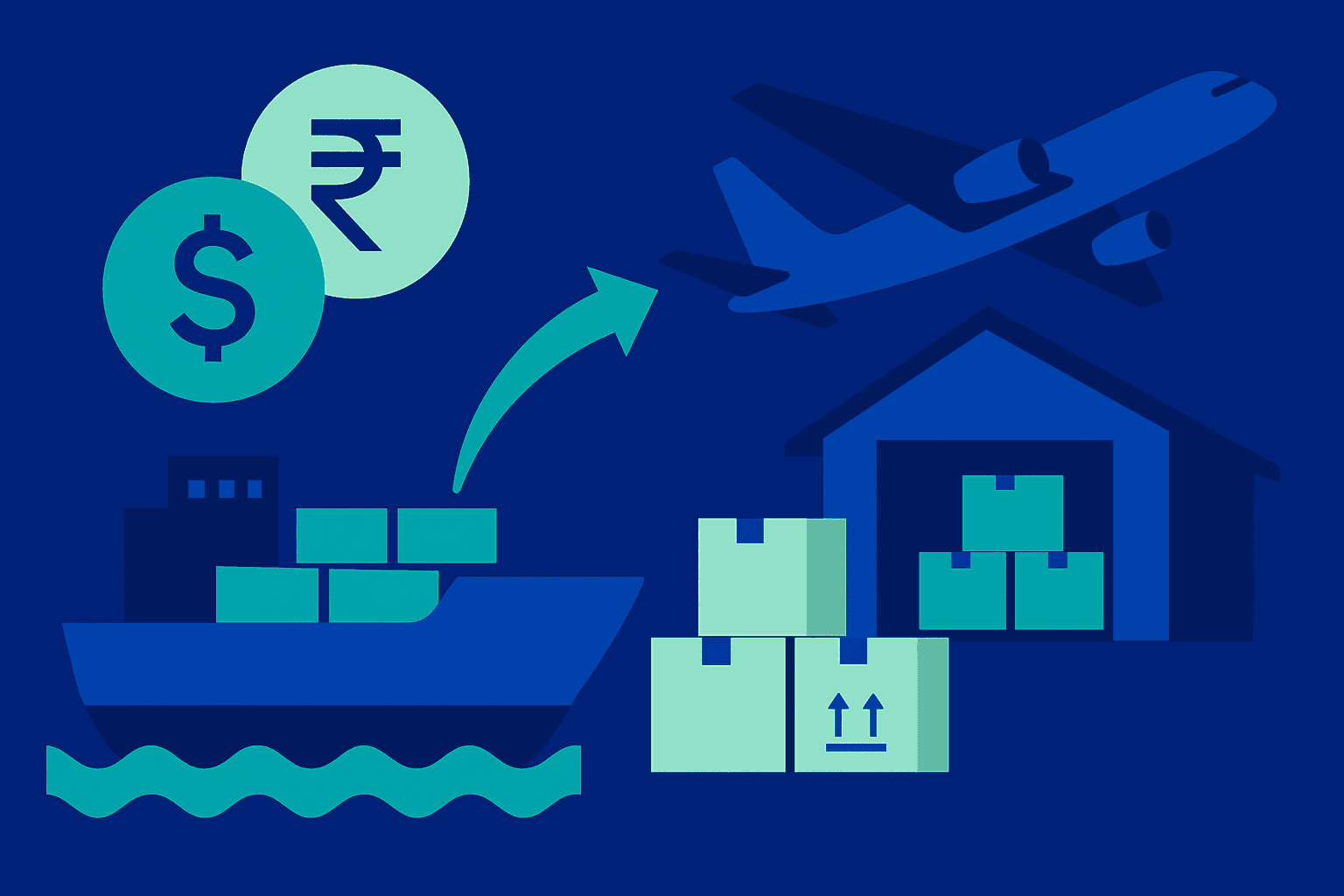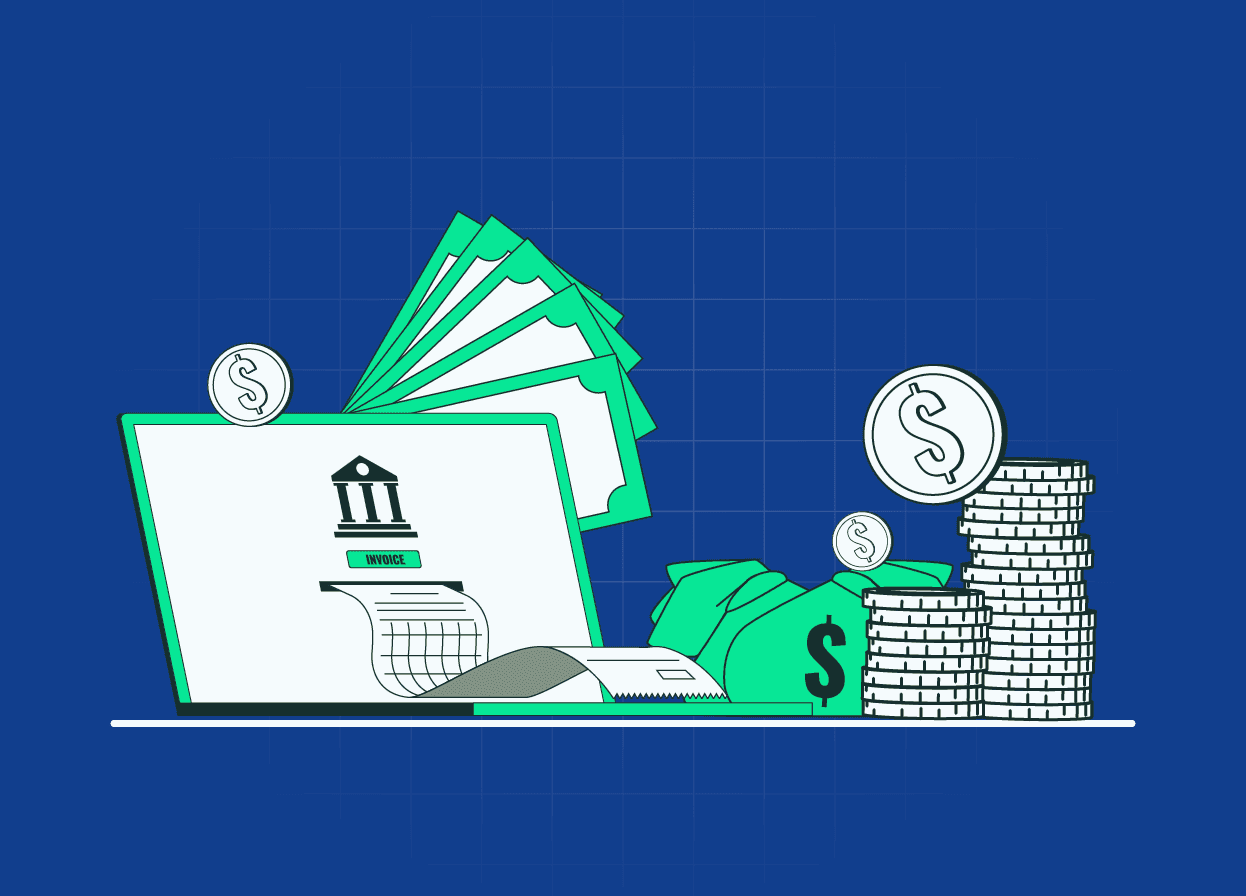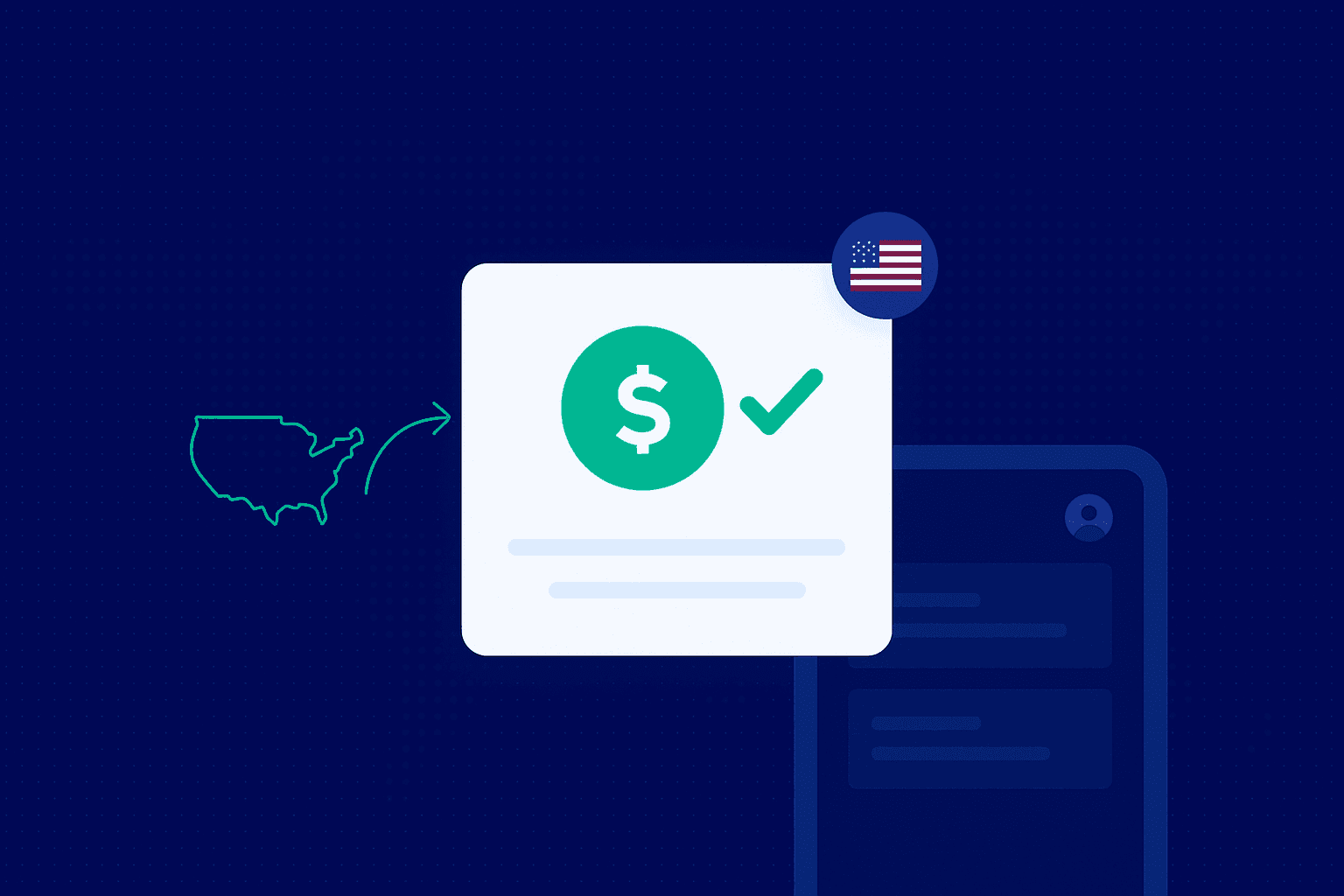PayPal in India (2025): Is it Available? Fees, Safety, and Best Alternatives

Last Update: October 2025
Quick Answer: Yes, PayPal is available in India in 2025 for international transactions. Indian users (freelancers, businesses, and consumers) can use PayPal to receive or make payments across borders, but domestic INR transfers are not supported. PayPal India focuses only on cross-border payments – you cannot send money in INR to another Indian PayPal user. Recent developments include PayPal’s RBI approval to operate under a regulated framework and an upcoming UPI integration for global payments. However, high fees and currency conversion charges apply, so many Indian users are also exploring alternatives like Skydo, Wise, and Payoneer to reduce costs.
Does PayPal Work in India in 2025?
Absolutely – but with caveats. PayPal works in India for accepting and making international payments, not local ones. In practical terms, an Indian freelancer or business can use PayPal to invoice overseas clients and receive payments in foreign currency, which PayPal will then convert to Indian Rupees (INR) and deposit into your bank account.
You cannot use PayPal for INR-to-INR transfers within India, as PayPal does not support domestic payments in India. PayPal actually exited the domestic India market in 2021, choosing to focus solely on cross-border transactions. So, while your Indian PayPal account is fully functional for global commerce, it’s not a substitute for local UPI apps or Indian bank transfers.
Key limitations: Any money you receive via PayPal in India is automatically withdrawn to your linked Indian bank account (usually within 24 hours) – you can’t keep a balance in PayPal. This automatic withdrawal is due to Reserve Bank of India (RBI) regulations. You’ll need to complete KYC (provide PAN, bank details, etc.) to use PayPal, and PayPal will issue you monthly FIRA (Foreign Inward Remittance Advice) statements as proof of your foreign earnings for compliance. Also, certain features PayPal offers elsewhere (like PayPal Credit, “Buy Now Pay Later” options, or storing money in a PayPal wallet) are not available in India.
2025 updates: In May 2025, the RBI granted in-principle approval for PayPal to operate as a payment aggregator for cross-border exports. This means PayPal will continue offering its cross-border payment services under direct RBI regulation – a positive sign that PayPal is here to stay and expand in India. Another exciting update is PayPal’s move to integrate with India’s famed UPI system. In late 2025, PayPal announced its plan for a new platform called PayPal World, making India’s UPI one of its first partners.
What does this mean? Soon, Indian consumers will be able to use their UPI apps (like Google Pay, PhonePe, etc.) to pay international merchants via PayPal’s network, thanks to this interoperability. It’s a step towards connecting Indian payment methods with global e-commerce. However, note that this UPI integration is primarily for Indian shoppers making payments abroad; it doesn’t mean you can receive INR via UPI into PayPal. It simply underscores that PayPal is doubling down on cross-border payments and making it easier for Indians to participate in global commerce.
So, bottom line – PayPal absolutely works in India in 2025 for international transactions. It’s officially approved by regulators, and it’s building bridges like UPI interoperability to make cross-border payments smoother. Just remember that within India, you’ll still rely on other methods (bank transfers, UPI, etc.) for local money movement.
Is PayPal Safe to Use in India?
Safety is a common concern, and understandably so when your hard-earned money is at stake. Overall, PayPal is widely considered safe and secure for users in India. The platform has a long-standing global reputation for security. It employs strong encryption to protect your data, monitors transactions round-the-clock for fraud, and offers two-factor authentication options for account login.
In India and worldwide, PayPal also provides Buyer Protection and Seller Protection programs on eligible transactions. This means if you’re a buyer and you didn’t receive what you paid for, or you’re a seller dealing with a fraudulent chargeback, PayPal may cover you after investigation. These protections add a layer of trust for both you and your clients.
Real-world experience of most users confirms that PayPal is reliable. Major security breaches are rare. That said, no platform is 100% immune. In early 2024, for example, authorities in Singapore reported some cases of compromised PayPal accounts being used by criminals, leading to unauthorised transactions. PayPal swiftly clarified and addressed the issue, and it did not reflect any fundamental flaw in PayPal’s systems – the incidents were likely due to phishing or stolen credentials, not a hack of PayPal itself. The lesson was a reminder to users to practice good security hygiene (strong passwords, beware of phishing emails, enable 2FA) to keep their accounts safe.
For Indian users, PayPal’s track record has been solid. The company complies with RBI regulations and has local data storage as required, etc. When you use PayPal for international transactions, your money is travelling via a regulated, encrypted, and monitored channel. Of course, you should also do your part: never share your PayPal password or OTP, watch out for scam emails (“You’ve won money, click here” types), and keep your device secure. But these are standard precautions.
In summary, PayPal is safe to use in India. Its security infrastructure is robust, and it’s trusted by millions worldwide. As a freelancer or business, you can confidently use PayPal for your payments – just stay vigilant online. If security is a top concern, also know that all the major alternatives we’ll discuss (Skydo, Wise, etc.) similarly use bank-grade security and are regulated, so you have options without compromising on safety.
PayPal Fees and Charges in India – What Does It Cost?
Now to the not-so-fun part: fees. If you’re using PayPal in India, it’s crucial to understand how much it costs, because these fees can add up and eat into your earnings. Let’s break down PayPal’s charges for Indian users receiving international payments:
- Transaction Fee: This is PayPal’s commission for processing the payment. For Indian accounts receiving an international payment, the fee is 4.4% of the transaction amount. This rate is standard for most small businesses and freelancers (very high-volume merchants might get a slight discount, but for most of us it’s 4.4%). So if a client pays you $1,000, the transaction fee is $44.00. PayPal will deduct this percentage from the amount as soon as the payment arrives.
- Fixed Fee: On top of the percentage, PayPal charges a small fixed fee based on the currency you receive. It’s a flat amount meant to cover some handling costs. For example, if you receive a payment in US Dollars, the fixed fee is $0.30 USD. For Euros, it’s €0.35; for British Pounds, £0.20; for Indian Rupees (if somehow you got paid in INR via PayPal, which usually you wouldn’t), it’s ₹3.00, etc. This fee varies by currency but is roughly equivalent to ~$0.30 in most major currencies. It’s relatively small, but it’s still a fee – and if you have many small payments, those $0.30 chunks add up.
- Currency Conversion Fee (Forex markup): Here’s the fee that many people overlook. When PayPal converts the money you received from, say, USD to INR for withdrawal, they do not use the real mid-market exchange rate. PayPal adds a markup on the conversion rate – about 4% above the base exchange rate for most currencies. In practice, users often find the rate is 3–4% worse than the actual market rates. This is effectively a fee taken in the form of a weaker exchange rate. For instance, if the true market rate is ₹86 per $1, PayPal might give you around ₹82–83 per $1. That difference means you get fewer rupees for your dollars. This forex fee is the stealth cost that can hurt, especially on large payments.
To summarise, if you receive an international payment via PayPal India, you’ll typically pay: 4.4% + a fixed fee + ~4% in currency conversion markup. In formula form, PayPal fees = 4.4% + fixed fee + ~4% currency conversion fee. This adds up quickly
Let’s illustrate the impact with a real scenario:
Scenario: You invoice a client $5,000 USD for a project, and they pay you via PayPal:
Transaction fee (4.4%): $5,000 × 4.4% = $220 in service fees
Fixed fee (USD): $0.30 (for USD transactions)
Remaining after PayPal fees (before conversion): $5,000 – $220.30 = $4,779.70.
Currency conversion: PayPal will convert $4,779.70 to INR at ~4% below the market rate. If the actual rate is ₹86 per $1, PayPal’s rate might be ~₹82.5.
So you’d get roughly ₹4,779.70 × 82.5 = ₹3,94,270 (approximately).
Takeaway: PayPal’s convenience and global reach come at a price – roughly 58% of your payment will be taken in fees (transaction + fixed) and forex conversion. This is one of the highest among various payment methods. So if you’re planning your pricing or considering which platform to use, keep this cost in mind. In the next sections, we’ll look at pros/cons and alternatives, some of which can save you a lot on these fees.
(Note: PayPal’s fee structure is the same regardless of whether your client pays by their PayPal balance, card, or bank – the fee is charged to you as the receiver. If you’re sending money as a customer, different fees might apply, but here we’re focused on business payments. Also, fees can slightly vary for very high-volume accounts or special arrangements, but 4.4% is standard for most.)
Are there any other charges?
In India, PayPal’s fees are subject to 18% GST (Goods & Services Tax), but this tax is charged on the fees themselves, not on your whole amount. PayPal provides a consolidated GST invoice each month for the fees it has collected, which you may use to claim input credit or refunds if applicable to your business
PayPal in India: Pros, Cons, and User Experiences
Like any payment solution, PayPal has its advantages and drawbacks, especially in the Indian context. Let’s summarize the pros and cons for freelancers, SMEs, and exporters in India, with some real-world perspective:
✅ Pros of Using PayPal in India
- Global Acceptance & Trust: PayPal is one of the most recognised online payment platforms worldwide. Clients from the US, Europe, etc. are usually very comfortable paying via PayPal, which can help you get paid faster. Using PayPal can make a small business or freelancer appear more professional and trustworthy to international clients. Essentially, “PayPal” is a magic word – everyone knows it.
- Ease of Use & Quick Setup: Setting up a PayPal business account is relatively quick. You just sign up online, complete KYC, and you can start receiving payments. There’s no complex bank procedure or waiting for international wire transfers. Clients can pay with a few clicks using their credit/debit card or PayPal balance – all they need is your email.
Many users praise PayPal’s interface and integrations as “easy to use” and convenient. You can generate PayPal payment links or buttons for your website without coding, making it simple even for non-technical users. - Multiple Payment Methods for Clients: PayPal allows your clients to pay using a variety of methods: their PayPal account balance, credit cards, debit cards, bank accounts (via ACH direct debit in some countries), etc. This flexibility means a client has no excuse for not being able to pay you – they don’t even need a PayPal account (they can pay as a guest with a card). Also, PayPal supports recurring subscriptions, which is handy if you have retainer clients or SaaS-style billing.
- Security & Buyer/Seller Protection: As mentioned, PayPal has strong security features and protective policies. Your transactions are encrypted and monitored. If something goes awry (fraudulent chargebacks, undelivered goods, etc.), PayPal’s Buyer and Seller Protection programs can step in. This can give peace of mind: customers feel safer buying from you, and you have some recourse if a dispute arises. For many, this safety net is a big plus that alternatives may lack.
- FIRA Documentation: For exporters, software developers, or service providers in India, having proper documentation of foreign payments is crucial (for things like export incentives or GST refunds). PayPal provides monthly digital FIRA (Foreign Inward Remittance Advice) statements, which serve as proof of receipt of foreign currencies. This is a convenient feature to ensure you stay compliant with RBI rules and have paperwork ready for any audits or refund claims.
- Large User Base & Integrations: Because PayPal is so widely used, it integrates with countless platforms – from freelance marketplaces to e-commerce carts (Shopify, WooCommerce, etc.) and invoicing tools. There’s a high chance that any tool you use for online business has a “Pay with PayPal” option ready to go. This ecosystem support is a plus if you want to streamline operations.
❌ Cons of Using PayPal in India
- High Fees and Currency Conversion Rates: One of the key considerations with PayPal is the overall cost. PayPal charges 4.4% of the transaction amount, plus a fixed fee based on currency, and applies a currency conversion rate that includes a markup of around 3–4%. While this is standard for many global payment platforms, it can add up over time—especially for high-volume users.
Several users on G2 have noted that fees related to currency exchange can impact earnings. Since PayPal doesn't offer the mid-market rate, freelancers and businesses might see a slightly lower INR amount than expected after conversion. While the ease and global trust of PayPal is unmatched, these costs are worth factoring in when pricing your services or evaluating alternatives. - No Domestic Payments or INR Wallet: PayPal India is strictly for cross-border use. You can’t use it like PayTM or Google Pay within India. If a fellow Indian client wants to pay you in INR, you can’t do that on PayPal. It’s a one-trick pony – only international inbound (and personal outbound for shopping). Additionally, PayPal doesn’t let Indian users hold balances or send money out (for business accounts). Every payment you get is auto-withdrawn to your bank in INR. And if you, as a business, want to pay an overseas contractor or buy a service, you cannot use your PayPal balance (since you don’t have one) nor directly use PayPal to send money abroad from India – you’d have to use another method for outward remittance. This limitation means PayPal isn’t a full finance solution for an Indian business; it’s just a receiving tool for exports.
- Missing Features / Limited Local Relevance: As noted, a lot of PayPal’s cooler features elsewhere don’t exist here. No PayPal Credit (instalment payments), no local merchant offers, no ability to top-up a wallet and use it domestically, etc. These aren’t deal-breakers for using it as an export payments tool, but it means PayPal is a very narrow product for Indians. Meanwhile, Indian payment apps (UPI, etc.) are evolving rapidly with features, and other international platforms might give more flexibility on holding multi-currency balances (something PayPal can’t let Indians do due to rules). So, PayPal can feel a bit outdated or limited in scope compared to newer fintech solutions tailored for today’s needs.
Real-world user sentiment: (based on reviews from G2 and Reddit)
It’s instructive to note what others say. On platforms like G2 and Reddit, Indian users often praise PayPal’s ease of use and client trust, but complain about the fees. As one user noted on G2
“Customers love to pay through PayPal because it’s secure and easy... but the fees are a bit high... especially currency exchange fees.”
(Source)
Another review mentioned:
“When I received money, the exchange rate they provided was ₹82 when the actual rate was ₹86 – it makes a lot of difference for big amounts.”
(Source)
On community forums like Reddit, you’ll find more informal user commentary, with some Indian freelancers saying PayPal’s fees feel steep for regular use or preferring alternatives like Wise or U.S.-based setups. Phrases like “PayPal is too expensive for India” and “I only use it if the client insists” appear frequently. (Reddit example)
⚠️ Note: These insights are sourced from independent user reviews on platforms like G2 and Reddit. They reflect individual experiences, not the opinion or endorsement of Skydo.
Keep these pros and cons in mind as you decide if PayPal suits your needs. Next, let’s explore some alternatives that might offer a better deal while still getting you paid from abroad.
Best PayPal Alternatives in India (2025)
Given PayPal’s charges and limitations, many Indian freelancers, businesses, and exporters are exploring alternative platforms to receive international payments. The good news is that today there are several reliable options that can often save you money (and sometimes headaches). Here we’ll outline a few of the top PayPal alternatives for users in India, and how they compare:
1. Skydo – Low-Cost Solution Built for Indian Businesses
Skydo is an India-based fintech platform specifically designed for cross-border payments. It’s a popular emerging alternative due to its dramatically lower fees and India-friendly features. Skydo’s model is quite different from PayPal’s percentage cut:
- Transparent Fees, No Forex Markup: Skydo charges a flat fee instead of a percentage. For example, $19 for payments up to $2,000, $29 for payments up to $10,000, and 0.3% for amounts beyond $10k. There are no fixed per-transaction fees and no currency conversion markup on the exchange rate. You get the real mid-market rate for USD/INR or other currency conversions – essentially the same rate you’d see on Google, with zero margin taken. You only pay that flat service fee. This transparent structure can be extremely cost-effective for larger payments.
Cost Savings Example: In practice, Skydo often ends up being 5–8 times cheaper than PayPal for the same transfer amount. For instance, on a $5,000 payment, PayPal might cost around $415 in combined fees (as we calculated ~8% of $5k), whereas Skydo would charge about $29 flat. And because Skydo gives the full exchange rate, the difference in INR is huge – you might save over ₹30,000 on that single $5k transaction. That’s money back in your pocket. - Other Benefits: Skydo provides you with instant virtual bank accounts in major currencies like USD, EUR, GBP, etc. This means your U.S. client can, for example, pay into a U.S. bank account number provided by Skydo, and the money routes to you in India – making it easy and local for the payer. Skydo also auto-generates FIRA for every transaction (no need to manually request it) and offers an India-based customer support team, which can be a relief when you need help or have questions about RBI compliance, etc. Essentially, it’s built with Indian exporters’ needs in mind (like documentation and local support).
- Drawbacks: Skydo is focused on receiving payments (inbound to India). It’s not meant for sending money out or for domestic use. So you can’t pay vendors abroad with Skydo; it’s a one-way inbound solution, which is fine for freelancers/exporters. Plus, for smaller transactions, say under $500, Skydo may not be the most cost-effective option, although it will still be more affordable than PayPal.
In summary, Skydo offers a fast, secure, and far more cost-effective alternative to PayPal for Indian users who prioritise keeping fees low. It’s especially great for larger transactions where the flat fee model shines. You do give up some of PayPal’s universality (clients might not know Skydo like they know PayPal), but many users find that once they explain the savings, clients are willing to do a simple bank payment via Skydo. It’s a compelling option for serious freelancers and businesses looking to maximise their earnings instead of losing a chunk to fees.
2. Wise Business (formerly TransferWise) – Transparent Mid-Market Rates
Wise is globally renowned for its ultra-transparent approach to international money transfers. Wise (through its business account offering) is another excellent alternative for receiving payments from abroad into India:
- Mid-Market Exchange Rates: Wise’s biggest selling point is that it gives you the real mid-market exchange rate with no markup. They do not hide fees in poor rates. If the rate is ₹86 per USD, you’ll get ₹86 (minus a small explicit fee). This can save you 3-4% straight away compared to PayPal’s rates.
- Upfront Low Fees: Instead of a large percentage cut, Wise charges an upfront transfer fee, which usually ranges around 1.6% to 1.8% (it can vary depending on currency corridor and amount, sometimes even lower for big amounts) For example, receiving $1,000 via Wise and converting to INR might cost you about $16-$18 in fees total plus perhaps a small fixed charge for certain routes. Wise is very transparent: before you make a transfer, it shows exactly how much fee will be taken and what rate you’ll get. In contrast to ~$80+ cost with PayPal for $1k, Wise’s ~$17 cost is a huge difference.
- Multi-Currency Account: With Wise Business, you get multi-currency receiving accounts (like Payoneer and Skydo do). You can receive USD, EUR, GBP, etc., into local accounts in those regions. Then you can convert to INR whenever you want at great rates. You could even choose to hold foreign currency in Wise for a while if you expect the exchange rate to improve (though currency speculation is risky – but the option is there).
- User Experience: Wise’s platform is very user-friendly – clean interface, no ads or pushes for credit or anything. It’s very much built to “just move money cheaply and easily."
- Considerations/Limitations: Wise has some caps – e.g., you can invoice/request up to $10,000 per transfer in Wise Business If you need to receive larger amounts in one go, that could be a hurdle (though you could split into multiple invoices). Another thing: Wise offers digital FIRA for every transaction; however, it charges USD 2.50/FIRA.
In summary, Wise is one of the best alternatives if low cost and fair exchange rates are your priority. It’s especially great for small to medium payments and frequent transfers, where PayPal’s fixed fee and higher percentage really hurt.
3. Payoneer – Widely Used for Freelancers & Marketplaces
Payoneer is another long-standing player in international payments for freelancers and businesses. A lot of people who work with global marketplaces (Upwork, Fiverr, Amazon, Airbnb, etc.) end up using Payoneer, because those platforms often offer Payoneer as a withdrawal method. Here’s what you should know:
- Receiving Accounts & Global Use: Like Wise and Skydo, Payoneer provides receiving accounts in multiple currencies (USD, EUR, GBP, etc.)You can receive payments from clients into these accounts. Payoneer is quite popular among freelancers – for example, if you earn on Upwork, you can withdraw your funds to Payoneer, then to your Indian bank. It’s also used in e-commerce (Amazon sellers getting paid from US/EU marketplaces). It’s a trusted and well-known brand globally, so many clients or companies are familiar with it.
- Fee Structure: Payoneer’s fees can be a bit complex, but generally, if a client pays you via Payoneer’s system (say you send a Payoneer payment request or the client also has Payoneer), the fee ranges from 0% up to 3.2%. It depends on the method – for example, if the payer uses their Payoneer balance or possibly a bank transfer, it might be 0-1%. If they pay by credit card via Payoneer, it could be around 3%. So it can actually be cheaper than PayPal’s 4.4% in some cases. Then, when you convert currency to INR and withdraw to your bank, Payoneer typically charges up to 2-3% as a currency conversion fee (i.e., they also take a markup on the exchange rate). In total, you’re usually looking at around 2% to 5% cost. Worst case (client pays by credit card and you withdraw to INR) maybe ~5-6% total; best case (client pays via a no-fee method) maybe ~2-3% total. So Payoneer can be cheaper than PayPal, but it’s not always super cheap – it sits somewhere in the middle.
- Other Features: Payoneer offers some features like a prepaid Mastercard linked to your account (so you could spend your balance directly) – however, availability of this card for Indian users has been off and on due to regulatory changes; it’s worth checking current status if you need it. They also let you make payments to others within the Payoneer network for free or low cost, which can be useful if, say, you want to pay a subcontractor who also uses Payoneer. Payoneer’s integration with many platforms is a big plus; sometimes it’s the only viable way to get paid from certain companies that don’t do PayPal or bank wires.
- Drawbacks: One thing to watch out – Payoneer has an annual inactivity fee (~$29.95) if you don’t use your account for 12 monthsskydo.com. This catches some people by surprise. Also, their forex rates, while better than PayPal’s, still have a markup (so not as perfect as skydo or Wise). And Payoneer can have other small fees: e.g., if you withdraw to your Indian bank in USD (to let your bank convert), there might be a fee; or if you use the card, ATM withdrawals etc. have fees. So, ensure you read their fee schedule. Generally, active users find Payoneer cost-effective and convenient, but you don’t want to leave the account idle.
Overall, Payoneer is a well-established alternative to PayPal with potentially lower fees, especially if you optimise how clients pay you through it. It’s extremely useful if you already use platforms that support Payoneer, or if your client is open to paying via Payoneer. Security-wise, it’s reputable and regulated. The slightly complex fee structure and occasional fees like inactivity, are the main downsides. But for many, Payoneer strikes a good balance of cost and convenience, sitting somewhere between PayPal and something like Wise in terms of overall cost
4. Stripe – Payment Gateway for Businesses (Selective in India)
Stripe is a leading global payments infrastructure company often used by online businesses to accept credit card payments. It’s not a peer-to-peer tool like PayPal but more of a developer-friendly payment gateway. Still, for Indian businesses that need to charge international customers’ cards, Stripe can be an alternative to PayPal’s “website payments” function.
- How Stripe Works: If you have a business website or app, Stripe lets you integrate a checkout where customers can pay by card (Visa, Mastercard, etc.) in their local currency. Stripe will then deposit INR into your Indian bank account (they handle the currency conversion and settlement behind the scenes)skydo.com. Essentially, Stripe can do what PayPal does for card payments, but in a more customizable way (without the customer needing a PayPal account).
- Fees: Stripe’s fees for international cards in India are roughly 4.3% per transaction, plus 2% for currency conversions. So in total, about 6.3% of the amount, give or take. This is a bit lower than PayPal’s ~8%, but still not cheap. Stripe’s currency conversion fee (2%) is also lower than PayPal’s ~3-4%. So you do save some money compared to PayPal’s card processing route.
- Limitations in India: Stripe is available in India, but in a somewhat controlled manner. As of 2025, Stripe India operates on an invite-only basis – you have to request access, and they vet your business (this is due to compliance and because they had paused at one point to sort out licensing) . Not all business types are supported; they might refuse high-risk industries or very small sole proprietors. Also, Stripe does not provide FIRA documents easily because of how their settlements work – since they convert and settle via local bank transfers, you might not get a formal FIRA on each transfer (which could be an issue if you need proof for incentive schemes Stripe is really oriented towards tech-savvy businesses that have an online presence and can integrate APIs.
- When to use Stripe: If your priority is to have a seamless card checkout on your own website or app, and you have the technical means to integrate it, Stripe is fantastic. It supports a lot of payment methods (in India, they even support domestic methods like UPI, but that’s separate from cross-border). Stripe’s tools for developers are excellent, and the checkout experience can be made very slick. But if you’re just looking to send payment links or invoices to clients, Stripe is probably overkill (and not readily accessible to all). Also, Stripe’s lack of buyer/seller dispute handling (it’s just card charges – disputes are chargebacks that you handle through docs) and lack of ecosystem (no marketplace of its own) differentiate it from PayPal.
In summary, Stripe can be seen as an alternative to using PayPal if you need to accept international credit card payments directly and possibly save a bit on fees. It’s a bit niche for individual freelancers unless you are running a full-fledged online business. The slightly lower fees come with the price of complexity (integration, invite process). For many small exporters, Stripe might be something to consider down the line as you scale, rather than an immediate PayPal replacement.
5. Others (Xoom, Wire Transfers, etc.):
Beyond the big four above, there are other ways to receive money from abroad, each with their own pros/cons:
Beyond the big four above, there are other ways to receive money from abroad, each with their own pros/cons:
- Xoom: This is actually a PayPal-owned service aimed at remittances (typically individuals sending money to family). Xoom allows someone in (say) the US to send money to someone in India, and it can be received as a bank deposit or even cash pickup. However, Xoom is not meant for business payments – it’s geared for personal remittances. Using it for commercial transactions would violate their terms. It also has its own fees and exchange markups. So while your US client could theoretically send you money via Xoom, it wouldn’t be proper for business, and amounts might be limited. Generally, we won’t consider Xoom a viable alternative for freelancing/export income due to those restrictions.
- Direct Wire Transfers (SWIFT): The old-school method – your client goes to their bank (or uses online banking) and sends you an international wire to your Indian bank account via the SWIFT network. This is always an option; no new account needed. However, wire transfers are usually expensive and slow. Typically, the sender will incur a fee (could be $20-$40 or more), and the recipient’s bank may also take a fee on incoming wires (₹500-₹1000 is common). Plus, intermediary banks sometimes take a cut. The exchange rate given by banks can also have a markup (maybe 1-2% off the market). It’s not uncommon to lose $50 or more on a $1000 transfer just in various fees and exchange losses. And it often takes 2-5 days to arrive. Wires are secure and fine for large amounts, but for frequent payments or smaller amounts, they’re not efficient. They also require sharing a lot of bank details (SWIFT code, etc.), which some clients find a hassle compared to just clicking PayPal.
- Crypto: A few tech-savvy freelancers consider accepting stablecoins or crypto to bypass fees. While this can eliminate transfer fees, it brings its own complexities – price volatility (unless it’s a stablecoin), converting crypto to INR legally (few exchanges, fees on that conversion), and regulatory grey areas. RBI doesn’t prohibit holding crypto, but it’s not legal tender and can’t be freely used in accounts. This route is only for those comfortable with crypto and willing to navigate those extra steps – it’s certainly not mainstream yet for export payments, so we won’t delve deep here.
- Other Niche Platforms: There are other international payment platforms out there (for example, Deel for contractors, which actually uses PayPal, Payoneer, etc. as underlying options; or Remitly, etc.). Some global payroll services exist for enterprises. But for the scope of an individual or SME exporter, the ones we covered are the primary ones. Each has a different mix of fees and features; it’s worth checking if, say, a particular platform has a promo or if your client’s country has a preferred service that’s cheap (some countries have local transfer services that partner with Indian banks).
In essence, if you’re not sticking with PayPal, you have multiple alternatives – some focusing on ultra-low cost (Wise, Skydo), some on specific use-cases (Payoneer for marketplaces, Stripe for card payments). Many users even use a combination: e.g., use PayPal for certain clients who insist on it, but use Wise or Skydo for others who are flexible, thereby saving on fees for the majority of transactions. You might start with PayPal just because it’s easy, then gradually encourage repeat clients to switch to a cheaper method (maybe by offering a small discount or just explaining the fee savings).
The key is to find what works for you and your clients. Below, we’ll discuss how to evaluate these options based on your priorities.
Key Factors to Consider When Choosing an International Payment Platform
Whether you stick with PayPal or switch to an alternative, it’s important to evaluate platforms on a few key factors. Here are some essential considerations to help you choose the right international payment platform for your needs:
- Fees & Pricing: Look at the total cost per transaction. This includes the transaction fee (percentage of the amount), any fixed fee, plus the currency conversion markup. PayPal, as we saw, is on the higher side (~8%). Some alternatives might have lower percentage fees or flat fees. For example, Wise charges ~1.5% and gives real rates, Skydo has flat fees, Payoneer might be ~3-5%. Even a difference of 1-2% in fees can mean a lot more money in your pocket for large payments. Also consider things like whether the platform charges any setup fees, monthly fees, or inactivity fees. Transparency is key – it’s better if the platform clearly shows what you’ll pay.
- Exchange Rates: This is part of the fees but deserves its own look. The forex rate you get can make or break the value of your earnings. Always check: does the platform give you the mid-market exchange rate, or do they pad it? As we noted, PayPal and many banks take a hefty 3-4% margin on the rate. Services like Skydo give you real-time market rates with zero markup. Over multiple transactions, that difference is huge. For example, ₹3 less per dollar on $10,000 is ₹30,000 lost! So, prioritize platforms with honest exchange rates or very low markup.
- Speed of Settlement: How quickly do you get the money in your Indian bank? This can affect your cash flow. PayPal typically transfers to your bank in 1-3 days (and sometimes there’s an additional delay for new users or large amounts – they might hold funds briefly, especially when you’re new). Some alternatives are faster: for instance, Skydo often credits your bank within 24 hours, and Wise can be pretty fast too once set up. Traditional wires can take 3-5 days. Also, check if there are any hold periods for withdrawals (PayPal sometimes has a 24-hour wait, Payoneer might have a day or two processing). If you need money urgently, a faster payout platform is better
- Ease of Use & Client Convenience: The process should be easy for both you and your clients. PayPal scores high here because it’s familiar and simple – you send an invoice, they click and pay. Alternatives like Wise might require the client to do a bank transfer or go through a payment link (which is still fairly easy, but not as ubiquitous as PayPal). Consider your client base: if they are tech-savvy or open to new methods, you can use any platform. If some clients are old-fashioned or only trust big names, you might need to accommodate them. Also consider your side: Does the platform integrate with your website or workflow? If you have an online store, maybe a PayPal or Stripe integration is crucial. If you just send invoices, something like Wise or Skydo (which might not integrate but provide links) could be fine. Customer support is another aspect of ease – if something goes wrong, can you reach a helpful support agent quickly? PayPal support is hit-or-miss per user reports, whereas a company like Skydo touts India-based support, which could be a plus.
- Currency and Country Support: Think about where your clients are. Does the platform support payments from those countries in their local currency? PayPal is available in 200+ markets and supports two dozen currencies – very wide coverage. Wise and Payoneer also cover most major currencies and countries, but there could be a few exotic locales or currencies they don’t handle. Some smaller fintech platforms might not accept payments from certain regions due to regulatory issues. Ensure your main client geographies are covered. For instance, if you have clients in the US, EU, and Australia, most platforms support those. But if you have a client in, say, South Korea or Brazil, check if that’s doable (Wise, for example, doesn’t support receiving KRW directly, I believe). UPI integration, like what PayPal is doing, could open up more possibilities for Indian consumers to pay globally, but for you receiving money, focus on whether the platform can get money from your client’s country easily.
- Compliance & Documentation: As an Indian exporter/freelancer, you have to keep things compliant with RBI. All the major platforms we discussed (PayPal, Wise, Payoneer, etc.) operate under RBI guidelines – either as an OPGSP, PA, AD-II, or through banking partners. Ensure whatever you use is legitimate and allowed (for instance, using personal remittance channels for business payments is not strictly allowed). Also, consider the documentation: Do they provide a FIRA for your transactions? PayPal provides monthly FIRA statements, though sometimes you must download them. Skydo provides one per transaction automatically at skydo.com. Stripe, as noted, might not give formal FIRA easily. Having proper paperwork is important for taxes (you’ll need to show FIRA if you want to claim export income benefits or even just to satisfy tax authorities about foreign income). Also, check if the platform gives you GST invoices for their fees, which you might need for bookkeeping. In short, stay on the right side of regulations and choose a platform that helps you do so seamlessly.
In summary, the “best” platform depends on what matters most to you. If cost savings are #1, you’ll lean toward Skydo for its low fees and great rates. If client convenience and universality are most important, you might stick with PayPal or use it for first payments and then switch. If you need special features like card processing on your site, maybe Stripe. Many businesses use a mix-and-match approach: e.g., take PayPal for the first transaction (since it’s easy and the client trusts it), then suggest moving to a lower-cost method for subsequent payments once you’ve built trust. That way, you get the best of both – client comfort and cost savings.
The good news is, you’re not stuck with just one option. You can maintain a PayPal account and a Wise account, for example, and use whatever makes sense per client or transaction. Just keep an eye on the fees and choose wisely!
Conclusion: If You’re in India, Skydo Makes the Most Sense
PayPal will always win on familiarity. But if you care about keeping more of every invoice and staying audit-ready without the bank chase, Skydo is the better default for Indian freelancers, SMEs, and exporters.
- Lower, simpler costs: Flat fees and no FX markup mean you don’t lose 3–4% in the exchange rate spread. On real-world invoices, that’s the difference between “good month” and “great month.”
- Compliance handled: Automatic FIRA saves hours and headaches at tax time and during audits.
- Built for India: INR settlements, local support, and workflows designed around RBI norms instead of workarounds.
- Client-friendly collection: Virtual local accounts (USD/EUR/GBP, etc.) make it easy for overseas clients to pay you like a domestic transfer—no friction, fewer excuses.
Practical playbook we recommend:
- Offer Skydo first for new and repeating clients (lowest total cost, clean docs).
- Keep PayPal as a backup when a client insists or needs buyer protection.
- Use Wise/Payoneer selectively where they’re uniquely convenient.
If your goal is to maximise take-home, simplify compliance, and avoid surprise deductions, Skydo should be your primary rail—with others as situational fallbacks.
Curious what you’d actually save on your typical invoice? Map one recent payment through Skydo’s fee/FX and compare it to your PayPal payout—you’ll see the gap immediately.
Is PayPal available in India?
PayPal works in India but has limitations. Domestic transactions and local INR transfers aren't supported, so businesses can only receive international payments, not send them. Personal users can make international payments, but features like Buy Later and PayPal Credit are unavailable in India.
Is PayPal available in India for international transactions
What are the PayPal transaction fees India?
How can I withdraw funds from my PayPal account to an Indian bank account?
Is PayPal available for domestic transactions within India?












